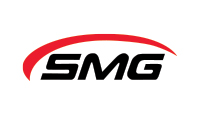April 9, 2015
West Virginia Senate Bill 423 amends the AST Act
POSTED BY
Ken Kirk, P.G.TAGGED
SHARE
On March 27, 2015, West Virginia’s Governor Tomblin signed Senate Bill 423 (“SB 423”) amending the West Virginia Aboveground Storage Tank Act (the “AST Act”, W. Va. Code §§ 22-30-1) codified in April 2014 and effective June 6, 2014. The amended Act, effective June 12, 2015, will relieve most USTs of most of regulatory requirements of SB 373; however, they will still be subject to at least some aspects of the AST Act, including registration requirements and other general provisions (i.e., required signage).
The emphasis of SB 423 will be on tanks in close proximity to public water supply intakes, containing specified hazardous substances, or with capacities of 50,000 gallons or more.
The Act adds a new definition “Regulated Tanks” which are further broken down into two subdivisions; Level 1 Regulated Tanks and Level 2 Regulated Tanks based on their level of concern determined by their proximity to sources of public water withdrawals as described below:
Level 1 Regulated Tanks are ASTs within a zone of critical concern, source water protection areas, public surface water influenced groundwater supply source areas, or any tank designated by CERCLA or other federal environmental laws (except tanks containing petroleum); or an AST with the capacity of 50,000 gallons or more. “Zones of Critical Concerns” (ZCCs) will be determined using a mathematical model that accounts for stream flows, gradient and area topography. The length of the zone of critical concern is based on a five-hour time-of-travel of water in the streams to the intake. The width of the zone of critical concern is one thousand feet measured horizontally from each bank of the principal stream and five hundred feet measured horizontally from each bank of the tributaries draining into the principal stream.
Level 2 Regulated Tanks are ASTs within zones of peripheral concern and that are not classified as a Level 1 regulated tank. “Zone of Peripheral Concern” will be determined similar to the ZCC based on an additional five-hour time-of-travel of water in the streams beyond the perimeter of the zone of critical concern, which creates a protection zone of ten hours above the water intake.
The act also specifically excludes several structures as ASTs including but not limited to process vessels; tanks containing drinking water for human or animal consumption, surface water or groundwater, demineralized water, noncontact cooling water or water stored for fire or emergency purposes; tanks holding wastewater that is being actively treated or processed (e.g., clarifier, chlorine contact chamber, batch reactor, etc.); empty tanks held in inventory or offered for sale; and electrical equipment such as transformers, circuit breakers and voltage regulator transformers.
Mobile tanks that remain in one location for less than 365 days are also excluded as ASTs and will not need to be registered.
The final version of Senate Bill Number 423 can be reviewed @ http://www.legis.state.wv.us/Bill_Status/bills_text.cfm?billdoc=SB423%20SUB1%20enr.htm&yr=2015&sesstype=RS&i=423
